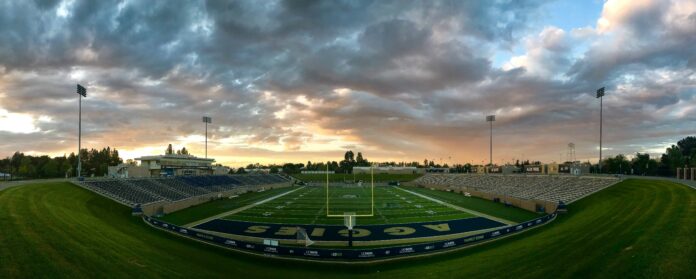Breaking down students’ contribution to UC Davis athletics
Students at UC Davis directly fund student athletics: For 2018-19, the NCAA reported that student fees made up $23.5 million, or about 57%, of UC Davis’ athletics budget.
Intercollegiate Athletics (ICA) at UC Davis receives student funding through student fees. Separate from tuition — which sits at $11,442 for full-time undergraduates who are California residents, with an additional $29,754 for nonresidents as supplemental tuition — the cost of campus-based fees is $1,925.27 for all UC Davis students. A high percentage of the revenue from student referendum fees, such as the Facilities and Campus Enhancements/Legal Education Enhancement and Access Program (FACE/LEEAP) fee, the Campus Expansion Initiative (CEI) fee and the Student Activities and Services Initiative (SASI) fee, are allocated to the athletics budget.
In the 2018-19 academic year, 23% of the FACE/LEEAP fee went toward athletics for maintenance and enhancements of the UC Davis Health Stadium and the Schaal Aquatic Center. According to 2017-18 financial reports, 38% of the CEI fee funded ICA for student-athletes’ grants-in-aid to support the campus’ move to NCAA Division I.
Financial reports from the 2018-19 school year show that 88.7% of the SASI fee was allocated to ICA sports to support the campus’ 25 varsity sports teams. Totaling almost $10.5 million, this money from student fees was used to cover operating expenses such as team travel, equipment, home game expenses, medical-related expenses and coach salaries.
UC Davis receives about 75% of its revenue from allocated resources, which includes institutional support and student fees. Other Football Championship Subdivision (FCS) and Big West schools operate with similar percentages.
Anissa Nachman, chief financial officer of UC Davis Athletics, said that the program has reached record fundraising totals and continue to push to increase the amount of generated revenue if more funding is needed.
“We allocate any increases [in funds] to areas that directly benefit the student-athletes and we’ve done a good job,” Nachman said. “Between revenue generation and being mindful to be efficient with funds, we are able to stay within our budget.”
And while millions of dollars annually go toward ICA, student fees also go toward Campus Recreation. That department, which oversees Recreational Sports – formerly Intramural Sports – has seen some scrutiny over how much the university charges to rent play fields, even with Campus Recreation being part of student fees.
Executive Director of Campus Recreation, Student Unions and Stores Jason Lorgan explained that the costs in the case of Recreational Sports directly benefit the program. Labor costs to pay officials, recorders and supervisors are a large expense, as is equipment.
“The participant fees are less than one-third of the costs incurred by the program,” Lorgan said. “Our largest expense is student labor, and that expense continues to go up as minimum wage goes up to $15 an hour by 2022.”
Lorgan also said that the goal is to keep costs for students as low as possible and to find other funding sources to offset programming costs. With student debt at record levels, however, some find that universities should focus their budgets toward education rather than athletics.
“[Academic institutions] should be about the academic, educational aspect rather than the entertainment piece,” said Fritz Polite, a consultant to the NCAA and the NFL on college athletics and recruiting, in a KCRA3 article.
In the article, Polite said students already spend too much money on college, saying athletics departments need to do a better job budgeting. Polite also said that universities need to let students know exactly what they are paying.
“It’s not a transparent process,” Polite said in the article. “There are some schools that give students the option, but very few. They just wrap it in their fine print, and the next thing you know, they’re paying these additional fees to support some activities that they may not even use.”
According to UC Davis’ ICA presentations, the department reiterates its financial operating principles of being transparent on the use of student fees in a frugal, clear and easy-to-understand manner. ICA also presents to the Council on Student Affairs and Fees (COSAF), one of the Chancellor’s Administrative Advisory Committees that aims to provide a comprehensive oversight of student referendum fees, as well as assure “the highest degree of transparency and accountability regarding the use of student fees.” COSAF votes on whether or not to approve of Consumer Price Index increases for many student fees.
“ICA presents to COSAF numerous times during each academic year and students can ask clarifying questions and regular provide input to ICA,” Lorgan said.
Written by: Graschelle Fariñas Hipolito — campus@theaggie.org




